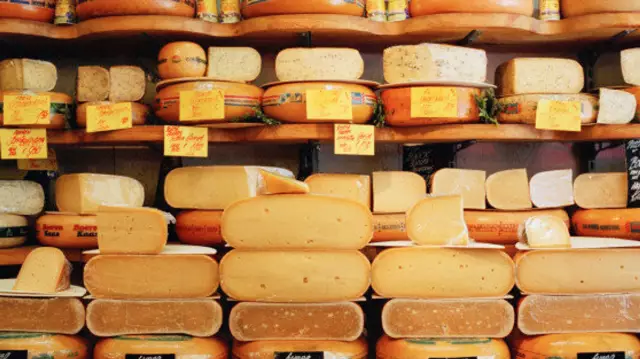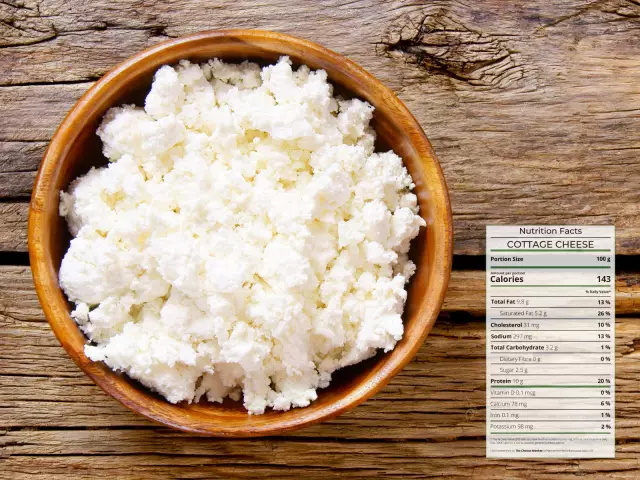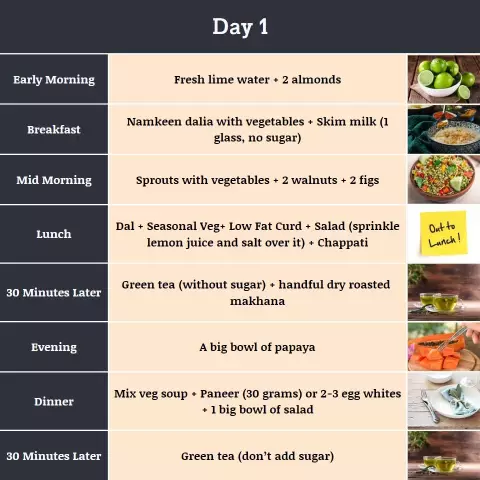- Author Rachel Wainwright [email protected].
- Public 2023-12-15 07:39.
- Last modified 2025-11-02 20:14.
Cheese diet

Cheese is one of the staples of a healthy diet that promotes longevity. Can cheese be on a diet? Yes, with the help of this healthy and tasty delicacy, you can quickly get in shape in a short time. There are two of the most popular varieties of the cheese diet. The Express Diet usually lasts three days; the cheese and meat diet lasts one to two weeks; the cheese diet is a low-carb diet that ensures that a balance of fat and protein is maintained at each meal. The cheese diet is quite effective (you can lose 5 to 7 kilograms in ten days). Such a diet is especially useful for spring vitamin deficiency, because cheese contains calcium, phosphorus, magnesium, vitamins A and D. Useful components of cheese are necessary for elasticity of the skin, beauty of hair and strengthening of tooth enamel. The body will be enriched with protein during such a diet,which is well and quickly absorbed by the body.
Principles of the cheese diet
The human body receives carbohydrates, proteins and fats from food. When there are not enough carbohydrates in the diet, the body is forced to expend subcutaneous fat (a reserve source) for energy. When choosing cheese for a diet, you must take into account its calorie content. Different types of cheese have different calories: semi-hard cheese contains 360-400 kcal, low-fat white cheese - 250 kcal, processed cheese - 270-280 kcal. Many people are interested in the question, is it possible to eat cheese on a diet not in its usual form, but baked or melted? It really makes no difference, as long as the cheese diet is based on cheeses with a low percentage of fat (no more than 10-20%). It can be tofu, ricotta, mozzarella, guadette, chechil, Adyghe cheese.
During the cheese diet, it is very important to follow the drinking regimen. Drink plenty of clean water (at least two liters per day). The cheese diet is designed for a short-term period, and it is allowed to repeat it only after two to three months.
Cheese diet menu
The cheese diet in the classic version implies five or six meals a day. At the first breakfast, you should drink a cup of black coffee or green tea without sugar. During the second breakfast, you can eat a small piece of cheese and one boiled egg. For lunch, boil 200 grams of lean meat. Two hours after lunch, you can eat about one hundred grams of lean cheese. For an afternoon snack, eat no more than 250 grams of cottage cheese without adding cream, sugar and sour cream. Drink a cup of low-fat yogurt for dinner.
On the second day, during breakfast, eat 50 grams of cheese, one bell pepper, drink herbal decoction. During the second breakfast, eat a boiled egg, drink a cup of tea. For lunch, boil 200 grams of rabbit meat, eat 50 grams of cheese, drink a glass of mineral water. For an afternoon snack, you can eat 50 grams of cheese and two cucumbers. For dinner, eat 100 grams of cheese, drink a glass of kefir.
On the third day of the cheese diet for breakfast, eat no more than 150 grams of low-fat cottage cheese, two small tomatoes, and drink a cup of tea. During the second breakfast, eat 50 grams of cheese with 100 grams of asparagus, drink a glass of mineral water. For lunch, you can eat one hundred grams of cheese, 100 grams of boiled chicken breast, and drink a cup of tea. For dinner, eat 50 grams of cheese, one green apple, drink a glass of low-fat yogurt.
Adhere to this diet should be no more than five to seven days. You should take your time out of the cheese diet. Gradually add vegetables and fruits, pasta from durum wheat, a small amount of bread to food.
Diet with wine and cheese

The wine and cheese diet only lasts two to three days. For two or three days for breakfast, lunch and dinner, you should eat no more than 120 grams of hard unsalted cheese, one toast from wheat bread and drink one glass of dry wine. Drink about a liter of liquid between each meal. In three days of such a diet, you can be guaranteed to lose from three to five kilograms. The wine and cheese diet should not be used for more than two to three days. Drink about a liter of liquid between each meal.
If you follow a diet with wine and cheese, salt is practically not supplied to the body along with food. The intestines are cleansed of toxins and toxins, metabolism is activated.
Diet on cheese and cottage cheese (diet 5 cheese)
The advantage of a cheese curd diet is the variety and availability of foods included in the diet. For five days of the diet, you will need a bottle of white wine (you can replace it with kefir), five boiled eggs, five apples, five tomatoes, five cucumbers, one kilogram of low-fat cottage cheese. Greens (dill, green onions, cilantro, fennel, parsley) should be included in the diet. Processed cheese can be replaced with one hundred grams of soft cheese.
During the 5 cheese diet for breakfast, you can eat one processed cheese, drink a cup of tea or coffee without sugar. Two hours after breakfast, eat one large tomato with any greens, one egg. After an hour, you can eat one apple. For lunch, eat 200 grams of cottage cheese, one pepper, one cucumber with herbs. Drink a glass of wine before bed. You can drink water in unlimited quantities. With a diet of 5 cheese curds, it is very important not to change the amount of food during the day, but to maintain an interval of two hours between meals. The cheese curd diet cannot be used for more than five days. It is allowed to repeat such a diet more often than once every two months.
Contraindications to the cheese diet
A diet with cheese is contraindicated in cases of allergy to lactose, hypertension, atherosclerosis, angina pectoris, kidney disease, metabolic disorders, constipation. Cheese contains a large amount of milk fat and a small amount of carbohydrates necessary for physical and mental activity.
Found a mistake in the text? Select it and press Ctrl + Enter.






